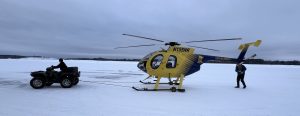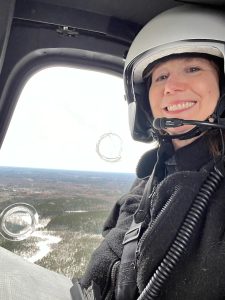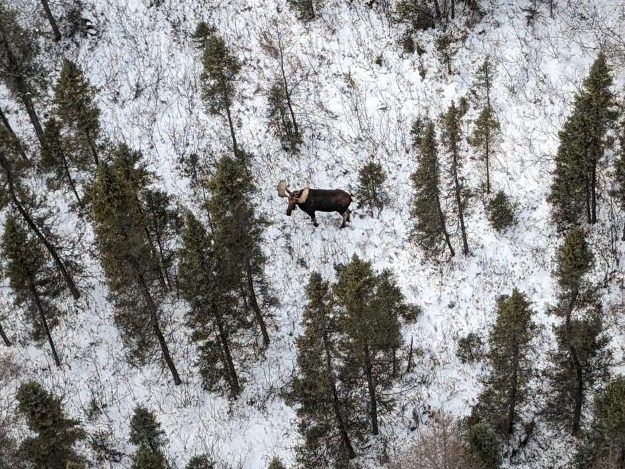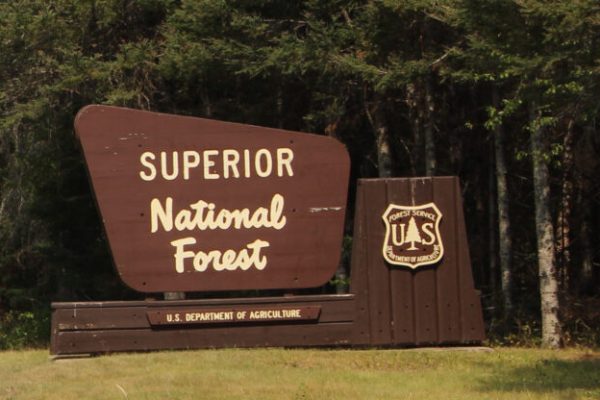Minnesota’s moose population remains relatively stable following 2024 survey
Minnesota’s moose population remains relatively stable, following the results of the 2024 moose survey in northern Minnesota.
After wrapping up the moose survey in early Feb., the Minnesota Department of Natural Resources (DNR) said the recent population estimate is approximately 3,470 animals.
Nancy Hansen, the Minnesota DNR’s area wildlife manager in Two Harbors, said the number is not a “highly precise population estimate.” Still, it gives the DNR an overall sense of the current status of moose in northern Minnesota.
The 2024 results are a 5 percent increase from the estimated 3,290 moose in the 2023 population survey.
The Minnesota DNR conducts annual aerial surveys each year by randomly selecting from 435 plots within the northern Minnesota moose range. Hansen said they conducted aerial surveys over 53 plots this year, ten of which were designated moose habitat.
One of the habitat plots included in the 2024 survey was the area of the 2021 Greenwood Fire near Isabella. Hansen said the area is still “a little bit young, but we did have a couple of moose on our Greenwood Fire plot this year.”
Hansen said the Minnesota DNR expects the number of moose in the area to increase as new tree species and shrubs re-grow.
The Fond du Lac Band of Lake Superior Chippewa and the 1854 Treaty Authority partnered with the Minnesota DNR to contribute funding and personnel for the 2024 annual survey. After collecting survey data, the biologists and wildlife managers analyzed the results and examined long-term trends.
Factoring in the 2024 population numbers, Hansen said, “Our trend right now is basically stable.”
On Mar. 4, the Minnesota DNR said in a news release the 2024 results suggest that after a steep decline from a population estimate of approximately 8,000 in 2009, Minnesota’s moose population appears to have stabilized and has fluctuated around 3,700 animals in recent years.
“Relatively speaking, it’s good news,” said Seth Goreham, a Minnesota DNR wildlife research manager. “So long-term trends, that means that population is still at risk. But what we’re seeing here is that decline has slowed down, and we seem to be fluctuating around a semi-stable number.”
Considering long-term trends and the latest 2024 population estimate, Hansen said it is a “fair assessment” to classify the moose population as relatively stable.
Minnesota’s moose population continues to face long-term survival risks, including brainworm transmission from deer, calf predation from wolves and bears, winter ticks, and changes to moose habitat in northeastern Minnesota.
Hansen said the Minnesota DNR and its partners are working towards improving moose habitat in the area, hoping to boost the population, but it’s a long road ahead.
While the mild winter conditions have been favorable for the moose this year, Hansen said, she worries about the impact of ticks this summer given the warmer winter temperatures and minimal snow.
Hansen said the minimal snow conditions this winter, while favorable for the moose, proved challenging for the Minnesota DNR and its partners during the annual moose survey.
The annual moose survey typically begins right after New Year’s in early Jan. However, Hansen said this year, “We couldn’t do that. We didn’t have enough snow.”
Rather than starting after New Year’s, the survey began ten days later, between Jan. 17 and Feb. 2, 2024. More snow on the landscape helps biologists and wildlife managers identify moose from the air. Despite the delay, Hansen said the crew persevered and completed the survey.

Photo by Nancy Hansen of 2024 moose survey

Minnesota DNR’s Nancy Hansen during 2024 aerial moose survey
WTIP’s Kalli Hawkins spoke with Nancy Hansen, the Minnesota DNR’s area wildlife manager based in Two Harbors, about the 2024 moose population survey and ongoing moose habitat improvement efforts in northeastern Minnesota. The audio from the interview is below.















